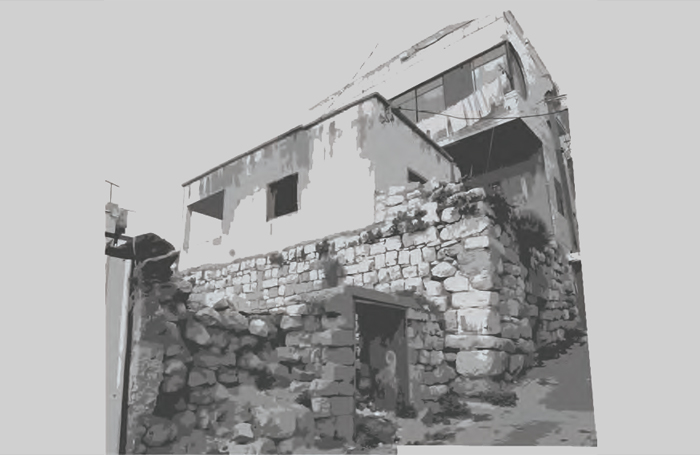Space Design, Making and Tectonics in Palestinian Architecture in Israel: Impacts of the Israeli Project
Abed Badran, Cardiff university, Welsh School of Architecture
Awards RIBA President's Awards for Research 2018
Category History & Theory

The physical construction of the Israeli state has brought massive destruction, demolition, and expropriation of Palestinian cities, villages, lands, and natural resources. In addition, Palestinian common spatial memory and culture were blurred over nearly one century.
The research assesses the dynamics and processes which were caused, and occurred exclusively at Palestinian architecture, by the mechanism and practice of the 'Israeli Project'. Critical review of the literature on Palestinian villages and architecture in Israel has revealed that research has yet to read the relationship between the 'Israeli Project' practice, and the transformed Palestinian domestic space, tectonics, making and its shaping factors.
Furthermore, the current literature reveals misunderstanding of the traditional Palestinian architecture’s essence, its intrinsic values and its evolutionary shaping factors. The research discovers that the traditional Palestinian house before 1948 had evolved in accordance with the evolution of Palestinian settlements; the Early/Pre-Form (nomadic), the Fluctuating-Form (rise and fall regularly), Emergence (birth), Deforming (into a better form or condition), Metamorphoses (complete homogenous village form), Heterogeneous Form (annexing of outsiders, group of interests), and the Ascendant Form (the urban).
The research notably develops a thorough reading of the asymmetrical power or the intercultural relations between the Israeli order and Palestinian architecture and the spatial practice post-1948, integrating postcolonial discourse, and explores a range of critical issues through the concepts of 'dichotomy', ‘hybridity’, ‘third space’, ‘resistance’ and the ‘in-between’.
During the last three decades, more and more Palestinians have embraced their culture in resistance to obliteration, exclusion and meltdown. As the research examines, an important aspect of this resistance is evidenced in crucial changes in the spatial boundaries of Palestinian dwellings, evolving from a space of inaction or reaction, to a space of action, thereby departing from a long history of cultural diffidence towards a new experience of resistance, towards a 'fourth space’.






